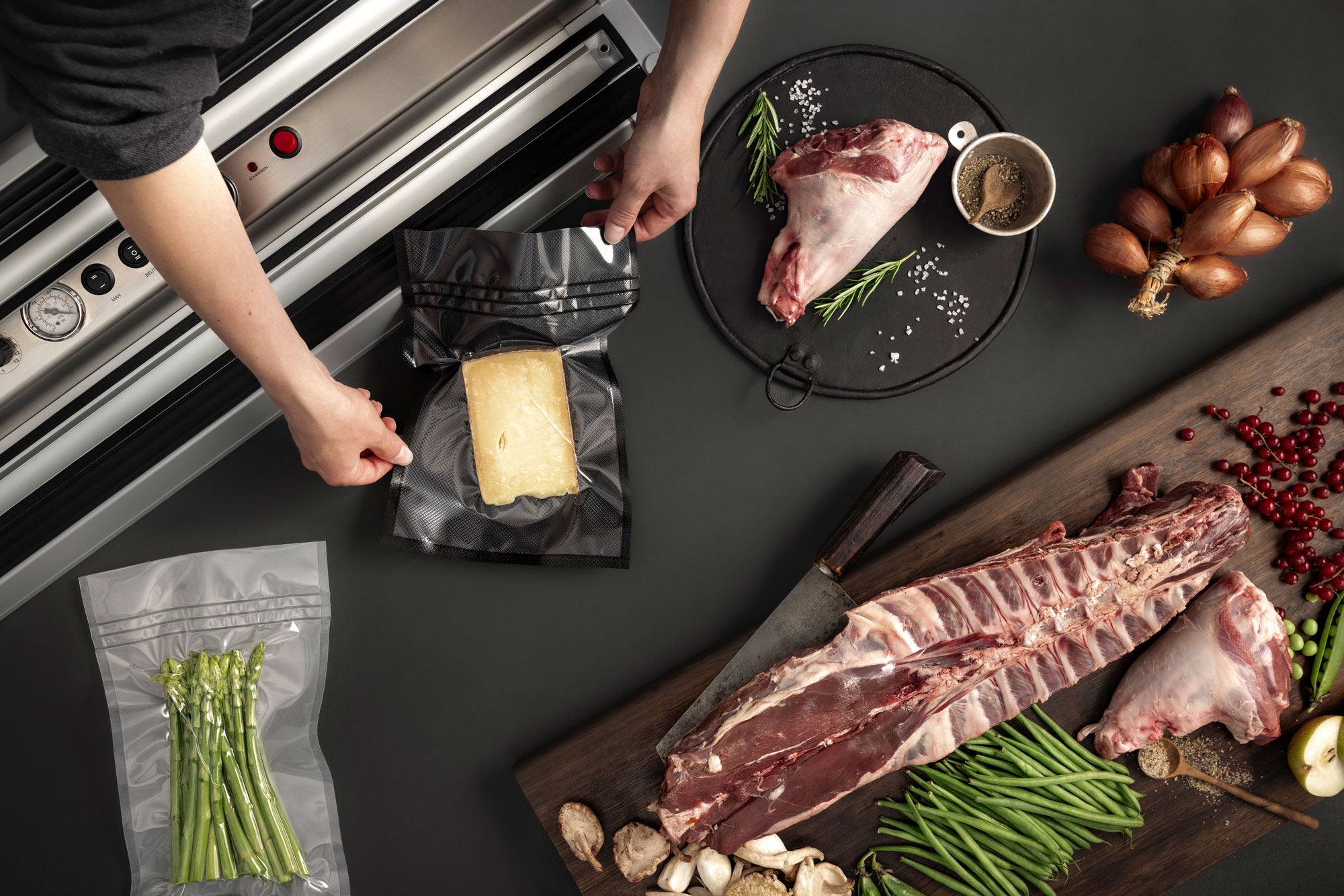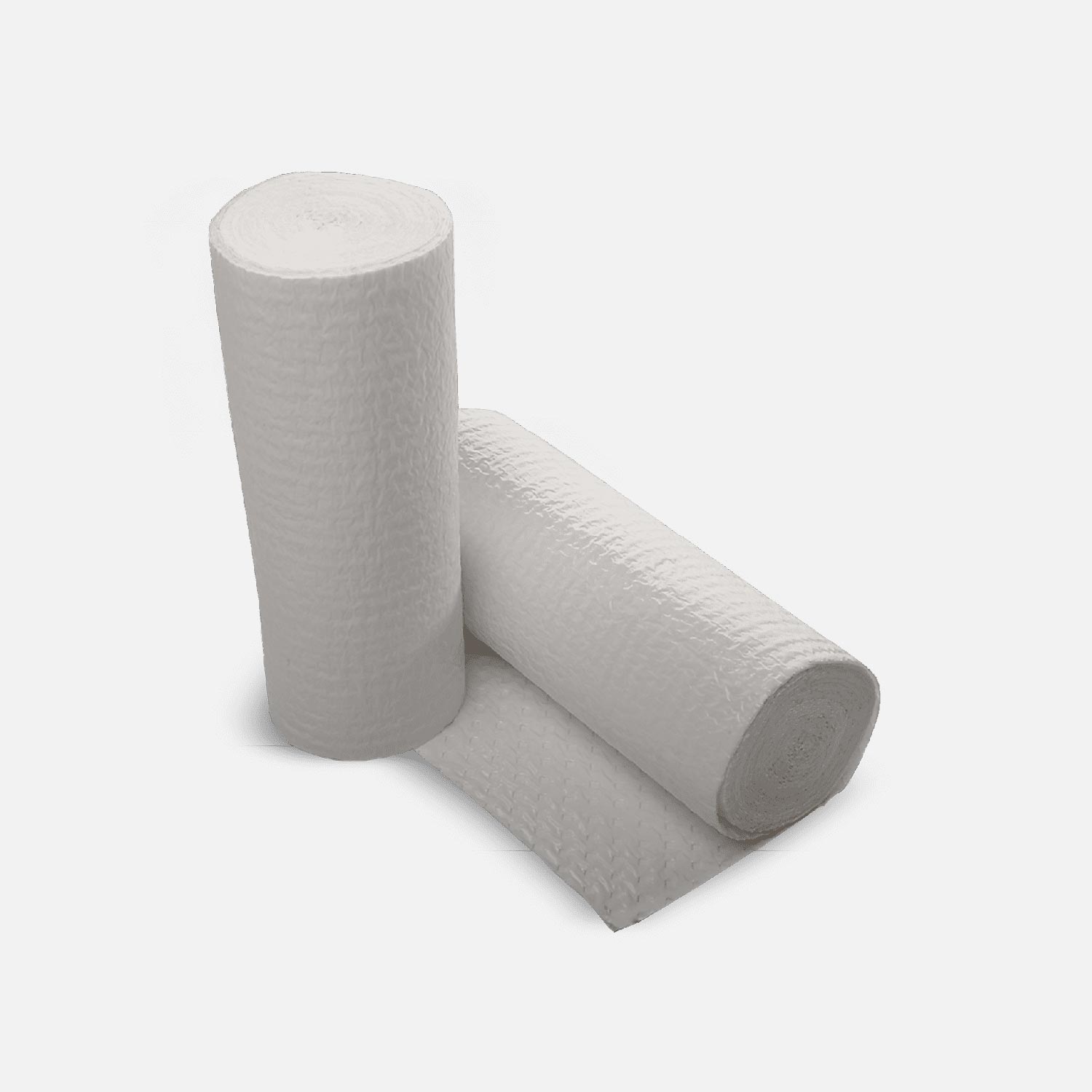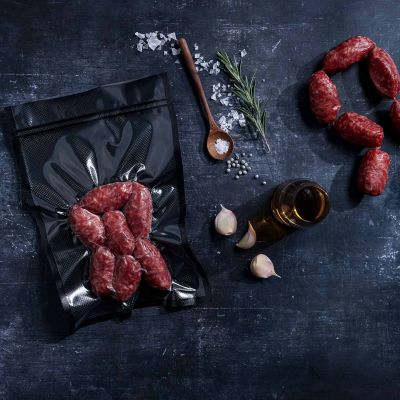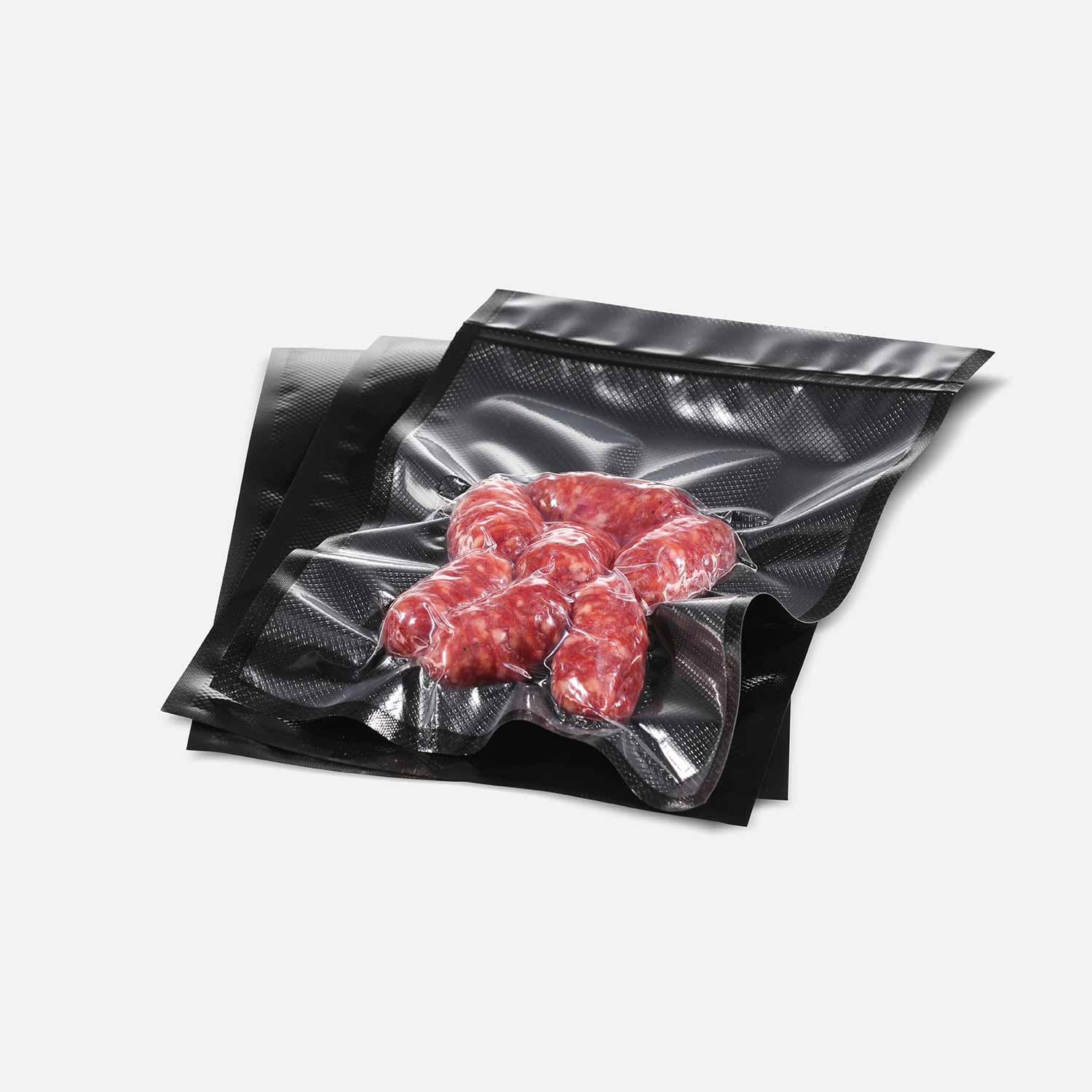Which foods can be vacuum-sealed?

Vacuum sealing food has proven to be one of the most effective methods for preserving freshness, reducing food waste, and extending the shelf life of supplies. From meat and fish to vegetables and liquids, almost any type of food can be vacuum sealed, provided it is correctly prepared and stored. In this article, you will learn which foods are particularly well-suited for vacuum sealing, which special precautions to take, and tips and tricks to help you get the most out of your vacuum sealer.
Which foods can be vacuum sealed?
- Meat products
Vacuum-sealed red meat, poultry, or cured meats last significantly longer and maintain their quality. Whether it's beef steaks, chicken breasts, or ham, the airtight seal protects against oxidation and bacteria. Make sure to wash and dry the meat thoroughly before vacuum sealing. If desired, you can add spices or marinades to enhance the flavor. - Fish and seafood
Fish fillets, shrimp, and mussels are excellent candidates for vacuum sealing with a vacuum sealer. Especially with these delicate foods, vacuum sealing helps to preserve the fresh taste and minimize the risk of bacterial growth. To ensure even vacuum sealing, fish and seafood should be well cleaned and dried beforehand. - Fruits and vegetables
Many types of fruits and vegetables can be vacuum sealed, but it's important to prepare them properly beforehand. For example, apples and bananas should be peeled, and green vegetables like broccoli or asparagus should be blanched before vacuum sealing. This helps to preserve the texture and color of the produce. - Beeries and other soft fruits
Soft foods should be pre-frozen before vacuum sealing to avoid crushing. - Dried fruits and nuts
Dried fruits and nuts are excellent candidates for vacuum sealing because they can lose quality when exposed to moisture. Vacuum sealing with a vacuum sealer keeps them dry and fresh, preserving their quality for longer periods. - Baked goods
Bread, cake, or cookies can indeed be vacuum sealed. However, they should be completely cooled before vacuum sealing to avoid condensation. Vacuum sealing helps prevent mold formation and preserves the taste. - Dairy products
Cheese, butter, and other dairy products can be vacuum sealed using a vacuum sealer, as long as they are not too moist before sealing. It's recommended to cut cheese into smaller portions to facilitate thawing. - Leftovers
Food leftovers can also be easily frozen thanks to vacuum packaging, to be enjoyed later. Make sure the leftovers are completely cooled before vacuum sealing them. For this purpose, the G-line glass vacuum container is particularly suitable. - Spices, herbs, coffee, and tea
Spices, herbs, tea, and coffee can be sealed in the metallized K-Vac vacuum bags, which provide protection against light and preserve their aroma and flavor. - Grains and legumes
Grains like rice or oats, as well as legumes like beans and lentils, are excellent candidates for vacuum sealing to protect them from pests and moisture. - Liquids
Soups, marinades, and sauces can be sealed in vacuum containers. However, it's crucial to ensure that they are cooled before sealing. Hot liquids can foam up and overflow from the container.
Tips and tricks for vacuum sealing
- Flash freezing: Freeze your food before vacuum sealing to prevent it from being crushed in the vacuum bag.
- Pat dry: Meat with high juice content should be dried with a paper towel before vacuum sealing to prevent too much meat juice from entering the liquid tray.
- Reduced pressure for liquids: Lower the pressure using the pressure regulator L+ for liquids to avoid your vacuum sealer sucking up the liquid separator.
- Use the liquid stop: Use the liquid stop to ensure a clean seal of the weld seam.
- Bone protection canvas: For particularly sharp bones or sharp edged products, it is recommended to use a bone protection linen to prevent tearing or damaging the vacuum bag.
- Portioning: Vacuum seal food into appropriate portion sizes to facilitate later thawing and use.
- Liquid foods: When vacuum sealing liquids such as sauces, soups, or juices, we recommend using vacuum containers.
- Food hygiene: It is important to use clean work surfaces and equipment as well as fresh food to avoid cross-contamination.
Foods that are not recommended for vacuum sealing:
Not all foods are suitable for vacuum sealing. For example, mushrooms and raw onions should not be vacuum sealed as they emit gases that can affect the vacuum. Carbonated beverages or hot foods should also not be vacuum sealed. Cheeses such as Brie or Camembert should also not be vacuum sealed as they can alter their texture and flavor.
Guidelines for storage and shelf life
Vacuum-sealed foods should be stored in a cool, dark area. Products suitable for freezing can be stored in the freezer. Vacuum sealing can significantly extend the shelf life of foods, but the actual duration depends on various factors such as the quality of the food and storage conditions.
Be sure to label vacuum-sealed bags and vacuum containers with the date and contents using labels and an appropriate permanent marker, for example. This ensures better organization and helps you use older supplies first.
With these tips and information, you're ready to make the most of vacuum sealing to keep your food fresh for longer.










